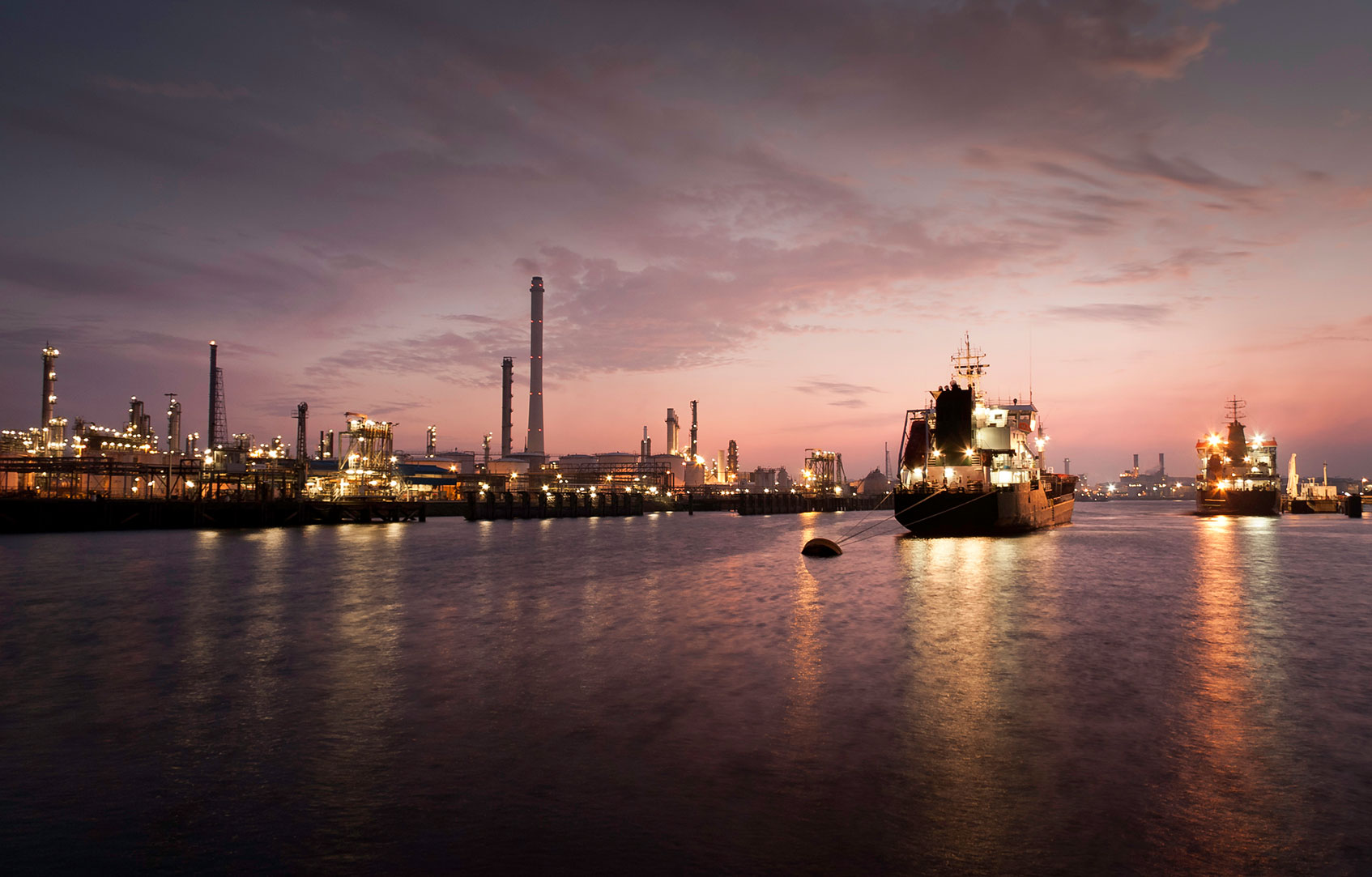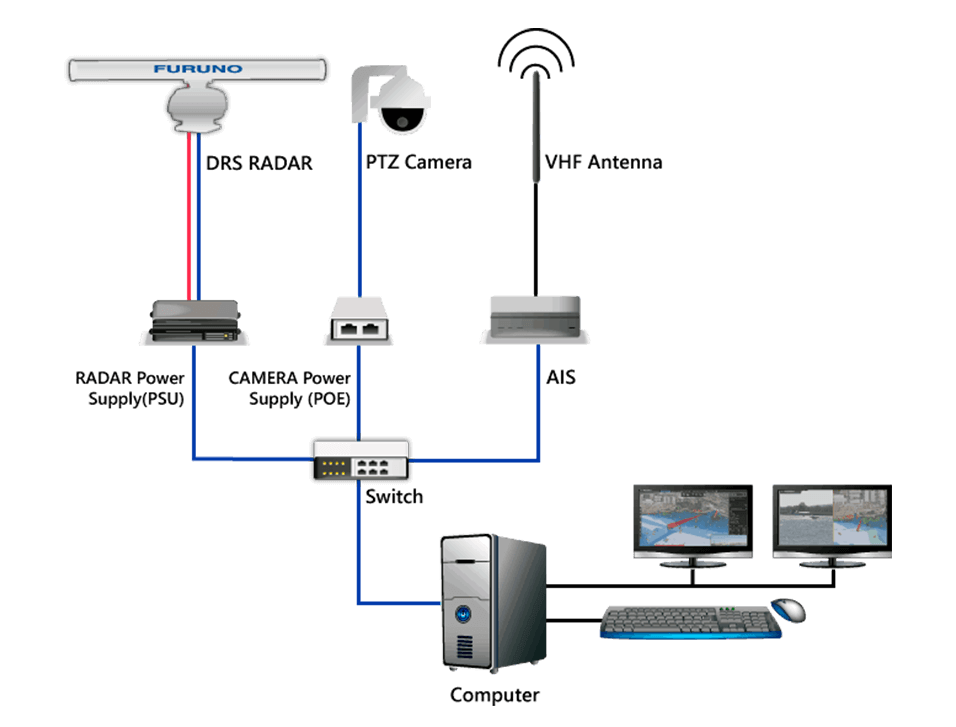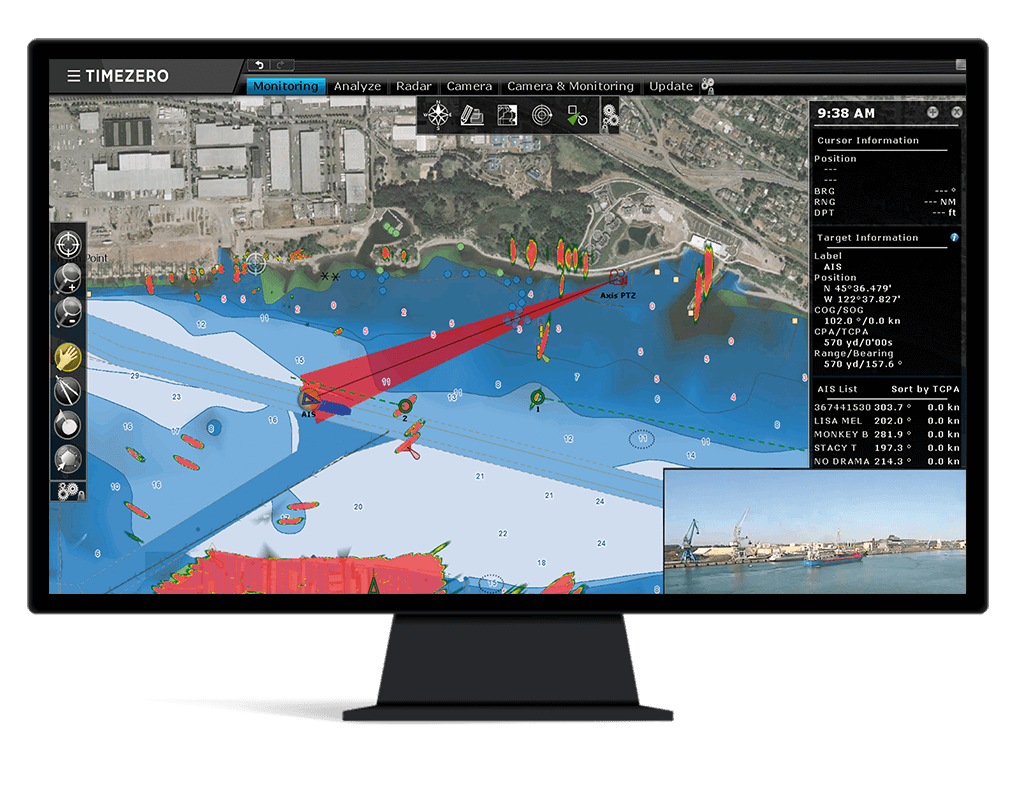
How is a Vessel Traffic System built?
Vessel Traffic System
Maritime facility awareness depends on your surveillance capacity in terms of instruments installation. Track maritime vessels using an array of VTS instruments smartly combined: radars, cameras, alarms, targets data, and weather forecasts to provide the best insights. Communicate, record and replay data are features you should easily access to ensure an efficient solution. Finally, remote access is not to be forgotten as it is one of the main advantages of setting up a Vessel Traffic System.

VTS data collection through hardware equipment
VTS surveillance systems make it possible to carry out AIS and ARPA tracking as well as images together with a communication system. Centralizing real-time data into a sole monitoring system is critical, that`s why a software is needed to make the whole system efficient. The diagram illustrates an example of small harbor installation with Furuno equipment. For this configuration, instruments required are: DRS Radar, Radar Power Supply (PSU), PTZ Camera, Camera Power Supply (POE), VHF Antenna, AIS, Switch, computer and maritime surveillance software. To monitor a larger coverage area or high levels of traffic you can add several cameras and radars with different capacities. The choice of the marine radar, and the type of camera are critical even for the smallest installation. It depends on several factors including your domain, your infrastructure, your resources, your objectives.
You should carefully look into all options and the latest innovations available. It`s always recommended designing the whole system with an expert, as they will be able to ensure meeting your requirement and limitations at the same time ensuring the global compatibility and efficiency of the final solution.

VTS data monitoring through software equipment
Ensuring the safety of lives at sea, the safe passing of ships, the efficiency of traffic, the protection of the marine ecosystem as well as the surround marine infrastructure requires an efficient processing of the collected data. Maritime surveillance software makes it possible to centralize and monitor real-time data including movement tracking for quick decision making.
Coastal surveillance software offers the following main features: automatic target tracking (including video vessel tracking system), sound and visual alarm management, data recording and archiving, weather forecasts and radar integration. Affordable coastal surveillance software should be included into Off-the-shelf system packages.
System Requirements
Before designing a VTS installation make sure the hardware is fully compatible with the software. A comprehensive installation for a small-scale infrastructure would need the following minimum PC requirements:
Operational System:
Windows 7/8/10 - Windows 10 PRO recommended
Processor:
2 GHz Dual Core
RAM
4 GB
HDD:
20 GB of free memory
Screen Resolution:
1024*800
Video Board:
- ATI or Nvidia Dedicated Video Board with 256 MB
- Dedicated Video Board with 512 MB recommended
Expertise is vital for a successful VTS installation
While VTS monitoring and surveillance is complex to design, the efficiency and profitability of the system depends on making the right set up. Your criteria for a VTS Installation should be:
Cost-efficiency
Proven reliability
Customizable solution
A VTS installation with incompatible equipment, unadapted capacities or too complicated data processing would easily end up in a waste of time and money, that`s why an experience partner is always recommended.
It`s because we have set up over 150 stations over the past year collaborating with local partners around the world that we can answer all your questions today. Don`t hesitate to get in touch with us for specific recommendations for your project.